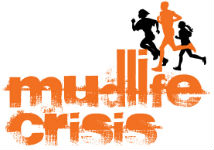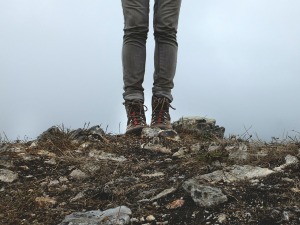You’ve probably heard the saying “variety is the spice of life.” The creator of that saying knew what he was talking about, without a doubt.
I’m in the middle of a great book right now: Move Your DNA: Restore Your Health Through Natural Movement by Katy Bowman, M.S. (as I mentioned in my previous post). And it’s all about how our lack of varied movement is a hitherto under-reported aspect of the failing health of people today. Our paved streets, chairs, confining shoes, tables and desks, and more have all combined to make us unfit movers and it’s taking its toll on our overall health – changing us from bodies that move in all directions and in tons of varied ways regularly into creatures with limited movement patterns and abilities.
This isn’t affecting just things like over- and under-use injuries, but it’s even affecting things like blood flow as parts of our bodies tighten up and affect the muscles around our capillaries. This tightening can cause muscles around our blood vessels to soften or harden and create eddys and currents in the flow of our blood that can lead to plaque buildup.
Getting regular movement all over the body, via walks with lots of terrain features and different grades, and even the seeking out of different walking surfaces can make a huge difference. (Great googly moogly, but this is a VAST simplification. I again highly recommend that you read Move Your DNA to understand this more)
And what about food? As John Ratey and Richard Manning pointed out in Go Wild: Free Your Body and Mind from the Afflictions of Civilization, our craving for variety isn’t just limited to movement. Our food is also not nearly as widely varied as it used to be. For example: the modern !Kung bushmen of the Kalahari, a frequently studied hunter-gatherer tribe in southern Africa, eat 105 different plants and 260 different animals on a regular basis over a year. Compare that to humans raised in the comfort of modern agriculture – and whose total number of species eaten is maybe 50 or so.
And the vast majority of what modern “domesticated” humans (to use a term from Daniel Vitalis) eat is from the cereal crops variety – one of the most nutrient-poor sources of anything but glucose there is. Humans used to get a ton of different micronutrients due to their enormous abilities to find and collect food from all over the place and during different seasons – and much of that nutrient deficiency is a symptom of why we overeat (to try to make up for those deficiencies by eating more in general).
It’s one of those situations where modern agriculture really hasn’t been good to us. We get less variety than ever and our bodies are craving more variety to make up for it.
So what’s to be done? I’d argue that taking on an attitude of trying new things constantly is a great way to keep ourselves healthy for a long time. Move as often as possible, and shake it up. When you walk, walk in the woods or hills. Climb up and down on rocks. Hang from jungle gyms at the park with your kids, or better yet climb trees with them. Play hide and seek, and hide in the tiniest places you can.
And, for that matter, run obstacle course races. You can’t beat an OCR for the variety of movement you’ll get – crawling, climbing, clambering, jumping, vaulting, occasionally swimming, running, walking, up and down, under and over, around and through, sprinting and jogging, and more. You’ll get more variety in an OCR than in any other form of exercise. And the best part is that the creators of OCRs are constantly trying to think of ways to test us further, so we’ll always be getting new movements to try out.
We’ll cover each of these aspects of variety in future posts.
Variety is the spice of life. And that spice is crucial.







